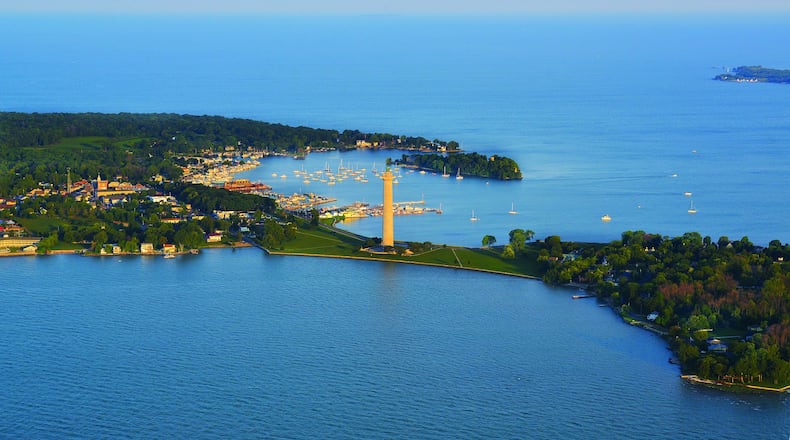The National Oceanic and Atmospheric Administration released its latest harmful algal bloom forecast for Lake Erie on Thursday, saying it'll likely be bigger than the one in 2016 but smaller than last year.
Usually the blooms aren’t visible until late July or early August when the water temperatures reach 65 to 70 degrees but warmer weather led to the appearance of a small bloom already, according to NOAA.
Related: Algae plaguing Ohio lakes could force Kasich to take executive action
This week, Ohio Gov. John Kasich signed an executive order to create new rules for farms whose fertilizer run off goes into eight river watersheds that feed into western Lake Erie.
The rules, subject to approval by the Ohio Soil and Water Conservation Commission, would force roughly 7,000 farms across 2-million acres in northwestern Ohio to reduce the fertilizer and manure that flows into those streams.
The Ohio Farm Bureau said Kasich acted without consulting farmers and that the order has “no realistic recognition” of the time and money it’ll take to comply. Agriculture is a $100 billion industry in Ohio.
In April, the Ohio Environmental Protection Agency declared the western basin of the lake “impaired” due to algae blooms.
Algae blooms commonly form in warmer, more shallow waters, such as the western area of Lake Erie, Grand Lake St. Marys and Buckeye Lake. Just last year, Kiser Lake near New Carlisle was overtaken by an algae bloom. Lake Erie is the shallowest and warmest of the Great Lakes, making it more susceptible to algae outbreaks.
They have become a major problem in all 50 states and the toxins from some blooms can cause vomiting, fevers and a number of other symptoms in people who come in contact with them, according to the federal EPA.
In 2014, some 500,000 Toledo area residents were told not to drink or even touch their tap water for four days because of high levels of toxins attributed to a bloom near the municipal water intakes.
As of this week, the Ohio Department of Health had issued 26 advisories on lakes and rivers over high levels of bad bacteria and algal toxins.
Related: Stopping ag runoff key to fixing Lake Erie problem
In June, lawmakers approved a bill to funnel $36-million into the “Clean Lake 2020 Plan,” including money for soil and water conservation districts in the Lake Erie Basin, water and drainage management, tributary monitoring and a loan program for farmers to reduce phosphorous runoff. Kasich signed it into law on Wednesday.
Some 11 million people in the U.S. and Canada drink treated water from Lake Erie every day. The blue-green algae blooms have been appearing in Lake Erie every year since 1998 with the largest ones appearing in 2011 and 2015.
Information from the Associated Press is included in this report.
About the Author

